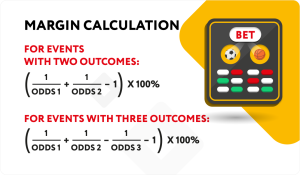Last updated on September 1st, 2025 at 06:28 am
Understanding odds and payouts is essential for anyone interested in sportsbook betting. These concepts determine how much you can win and help you make informed betting decisions. In this article, we will explore the basics of odds, different types of payouts, and how they influence your betting strategy, providing a clear foundation for both beginners and experienced bettors alike.
Introduction To Sportsbook Odds And Payouts
Sportsbook betting has grown rapidly in popularity, attracting both casual bettors and serious enthusiasts. At the heart of every wager are odds and payouts, which determine not only the potential winnings but also the level of risk involved in each bet. Understanding these concepts is crucial for anyone looking to make informed decisions and maximize their chances of success.
Odds represent the probability of a particular outcome occurring in a sporting event. They are presented in different formats decimal, fractional, or moneyline and each format influences how potential payouts are calculated. Payouts, on the other hand, indicate the amount a bettor can win based on their stake and the odds. Grasping how odds translate into payouts allows players to evaluate the risk-reward ratio of each bet more effectively.
In addition, reputable platforms like OIxtoto provide transparent odds and clear payout structures, making it easier for bettors to strategize and track their performance. Whether you are a beginner trying to understand the basics or an experienced bettor refining your approach, learning the relationship between odds and payouts is the first step toward successful sportsbook betting. This foundational knowledge sets the stage for smarter wagers and more enjoyable betting experiences.
Types Of Betting Odds
When it comes to sportsbook betting, understanding the different types of odds is essential. Odds not only indicate the likelihood of an outcome but also determine the potential payout for a successful bet. There are three main types of betting odds commonly used worldwide: decimal odds, fractional odds, and moneyline (American) odds. Each format has its unique presentation and calculation method, catering to different preferences of bettors.
Decimal Odds
Decimal odds are widely used in Europe, Canada, and Australia. They are straightforward and easy to understand, representing the total amount a bettor will receive for each unit staked, including the original stake. For example, if the decimal odds are 2.50 and you bet $100, your potential payout would be $250 ($100 × 2.50). Decimal odds are particularly user-friendly for beginners because they clearly show the total return without requiring additional calculations.
Fractional Odds
Fractional odds, often seen in the UK and Ireland, are expressed as a fraction such as 5/1 or 7/4. The numerator indicates how much profit you will make on a stake equal to the denominator. For instance, with odds of 5/1, a $100 bet would yield a $500 profit plus the return of the original $100 stake. While fractional odds may seem more complex initially, they are ideal for bettors who prefer analyzing the risk-to-reward ratio of a wager.
Moneyline (American) Odds
Moneyline odds, also known as American odds, are popular in the United States and come in two formats: positive and negative numbers. Positive numbers indicate the profit on a $100 bet, while negative numbers show how much you need to stake to win $100. For example, +200 means a $100 bet wins $200, and -150 means you must bet $150 to win $100. Moneyline odds are especially useful for bets with favorites and underdogs, providing clear insight into potential payouts relative to the perceived probability of the outcome.
Knowing these different odds formats is vital for anyone placing bets, whether casually or professionally. Before making a wager, ensure your account is funded correctly using services like deposit Olxtoto can help you quickly and securely add funds to your sportsbook account. By mastering these odds types, bettors can better assess risk, calculate potential payouts, and enjoy a more strategic approach to sportsbook betting.
Calculating Payouts
Calculating payouts is a fundamental skill for anyone involved in sportsbook betting. Payouts determine how much a bettor can win based on their stake and the odds of a particular outcome. The process varies slightly depending on the type of odds being used decimal, fractional, or moneyline.
For decimal odds, the calculation is straightforward: multiply your stake by the decimal number. For example, a $50 bet at 2.50 odds results in a $125 payout, which includes your original stake. Fractional odds require multiplying your stake by the fraction; a $50 bet at 5/1 odds yields $250 in profit, plus the original stake. Moneyline odds differ based on whether they are positive or negative. Positive odds show profit for a $100 stake, while negative odds indicate how much must be staked to win $100.
By understanding these calculations, bettors can assess risk and reward effectively, helping them make informed decisions and plan their betting strategies with confidence.
Factors Affecting Odds And Payouts
Several factors influence sportsbook odds and payouts, making it essential for bettors to understand how these elements interact.
- One of the primary factors is team performance and statistics. Bookmakers analyze past results, current form, player injuries, and head-to-head records to determine the probability of different outcomes. A strong-performing team with consistent wins will generally have lower odds, resulting in smaller payouts, while underdogs often offer higher payouts due to their lower likelihood of winning.
- Another key factor is market demand and betting volume. Odds can shift based on how much money is being wagered on each outcome. If a large number of bettors favor a particular team, bookmakers may adjust the odds to balance their potential liabilities. This dynamic nature ensures the sportsbook maintains profitability while reflecting public sentiment.
- Lastly, bookmaker margins play a crucial role. Also known as the “vig” or “juice,” this is the built-in profit margin that sportsbooks include in the odds. Higher margins slightly reduce potential payouts for bettors but ensure the bookmaker remains sustainable.
Conclusion
Understanding odds and payouts is essential for successful sportsbook betting. By learning different odds formats, calculating potential winnings, and considering factors that influence payouts, bettors can make informed decisions, manage risk effectively, and enhance their overall betting strategy for a more rewarding experience.









